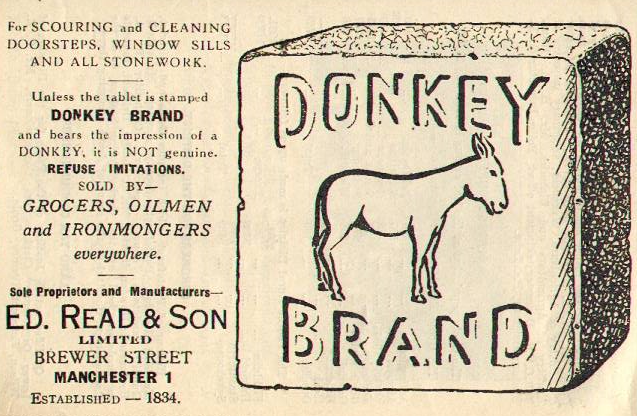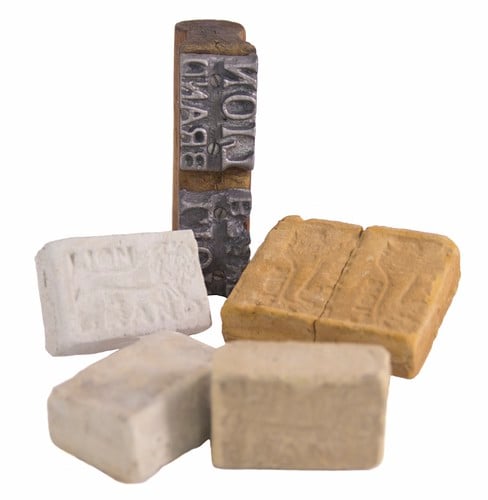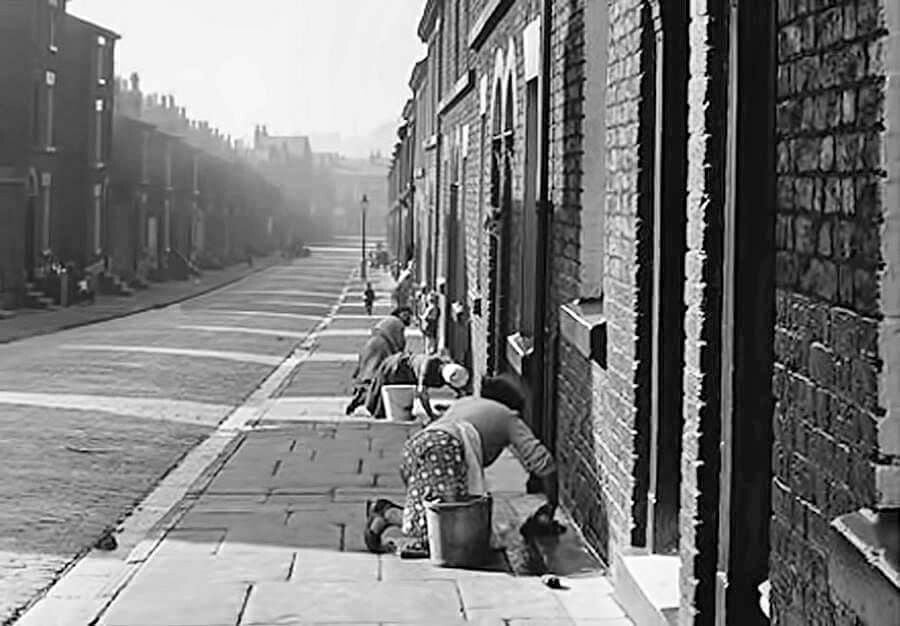‘Doing the step’ with a Donkey Stone
For people of a certain age, the Donkey Stone remains a memory of mills and their rows of terraced houses.
First seen in the textile mills of Lancashire and Yorkshire the stones were used to clean greasy steps and give them a non-slip coating but they soon became popular with the female mill workers who then used them in their homes to give their doorsteps a shiny, even finish.
These old-fashioned scouring stones, about the size of a bar of soap and named after their trademark donkey imprint, were moulded from a cement like mixture into a soft stone.
The Donkey Brand was originally the trademark of a Manchester company called Edward Read & Son, who were one of several makers of the stones. Other companies used other designs or lettering, such as Lion Brand, but the name ‘Donkey Stone’ stuck and became a household name for generations of housewives right up until the 1960’s.

As money was tight for the average working-class family Donkey Stones were usually obtained from the ‘Rag-and-Bone’ man in exchange for unwanted items. The housewife would be offered a stone varying in colour from light brown to yellow, pale cream or white and it was said that the colour she chose would denote the household’s status in society. Setting aside regional variants, a factory worker would often choose a deep yellow stone whereas if the man of the house had a white-collar job then pale cream or white stones would be used.
 Scouring with a Donkey Stone often extended from the front to the rear step of the home and even into window sills and back alleyways too. ‘Doing the step’ was a ritual carried out once a week and was frequently used as an opportunity to gossip with your neighbour but don’t be fooled by the friendly banter, the women took pride in their steps and would often be trying to outdo their friends and neighbours!
Scouring with a Donkey Stone often extended from the front to the rear step of the home and even into window sills and back alleyways too. ‘Doing the step’ was a ritual carried out once a week and was frequently used as an opportunity to gossip with your neighbour but don’t be fooled by the friendly banter, the women took pride in their steps and would often be trying to outdo their friends and neighbours!
The use of Donkey Stones gradually died out during the 1950’s and 60’s. The last manufacturer of the stones was a company called Eli Whalley, founded in the 1890’s, in Ashton-under-Lyne, which ceased trading in 1979. In its heyday the company’s eight workers were producing 14,000 Donkey Stones a day. A blue plaque commemorates the site of the old works at Donkey Stone Wharf on the canal and the machinery used to make the stones was saved by the Friends of Tameside Museum Service and today is housed at Portland Basin Industrial Museum in Ashton.
 These days this tradition has largely disappeared, relegated to the past like the cotton mills from whence it came, but in hidden corners of Lancashire there are still people around who religiously mop and stone their steps every week.
These days this tradition has largely disappeared, relegated to the past like the cotton mills from whence it came, but in hidden corners of Lancashire there are still people around who religiously mop and stone their steps every week.
What memories do you have of a ‘Donkey Stone’?
Melina - Assistant Editor
Latest posts by Melina - Assistant Editor (see all)
- Top tips for hay fever sufferers - April 14, 2024
- Paysan Breton Cream Cheese Breakfast Wraps - April 12, 2024
- 4 Homemade Sweet Treats for Easter - March 24, 2024
- Playground Memories - March 10, 2024
- The invasion of the duvet: the ’10-second bed’ - February 20, 2024





















